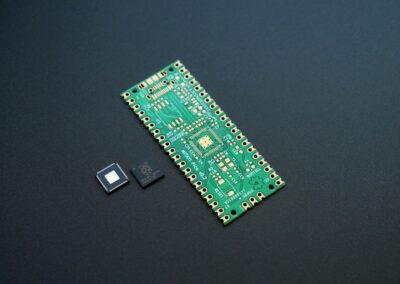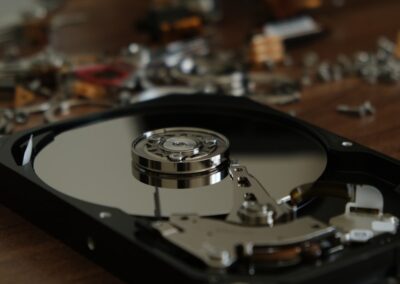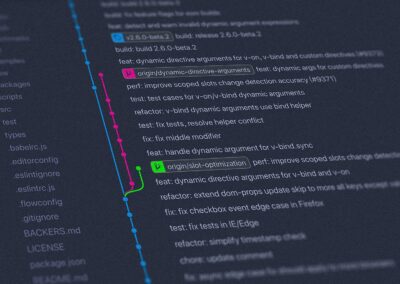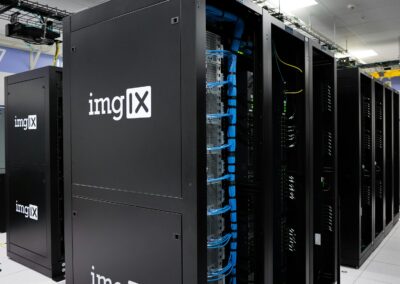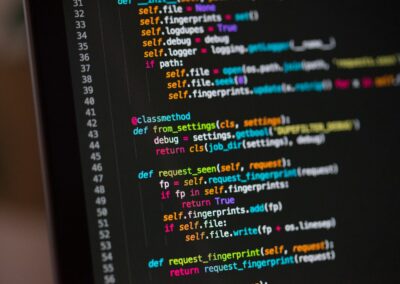Overcoming Data Integration Hurdles in Modern Business Environments
Challenges in Managing Data Flow Between IoT and Legacy Systems
Managing data flow between IoT and legacy systems is a significant challenge for businesses, particularly in technologically advanced regions like Saudi Arabia and the UAE. In cities such as Riyadh and Dubai, where digital transformation is a key driver of economic growth, the seamless integration of IoT with existing legacy systems is crucial. One of the primary challenges is the difference in communication protocols. Legacy systems often use outdated protocols that are not compatible with the modern, flexible standards used by IoT devices. This incompatibility can lead to data transmission errors, bottlenecks, and increased latency, affecting overall system performance.
Another challenge is data security. Legacy systems were not designed with the high-level security requirements of today’s interconnected IoT environments. This discrepancy can lead to vulnerabilities where sensitive data might be exposed to cyber threats. Ensuring that data remains secure during transmission between IoT devices and legacy systems is critical to maintaining the integrity and confidentiality of business operations.
Data volume is another significant challenge. IoT devices generate vast amounts of data continuously, and legacy systems may struggle to process and store this influx efficiently. This can lead to data overload, where the systems are unable to handle the sheer volume, resulting in loss of data or reduced performance. Efficient data flow management strategies are required to ensure that the data generated by IoT devices is appropriately processed, stored, and utilized by legacy systems.
Strategies to Address Data Flow Challenges
To overcome these challenges, businesses can adopt several strategies aimed at enhancing the integration and management of data flow between IoT and legacy systems. One effective approach is the use of middleware solutions. Middleware acts as a translator, facilitating communication between IoT devices and legacy systems by converting data formats and protocols into a mutually understandable form. This ensures seamless data flow, reducing errors and improving overall system efficiency.
Another strategy is to implement robust data security measures. This includes using advanced encryption techniques during data transmission to protect sensitive information from unauthorized access. Additionally, adopting blockchain technology can provide an immutable and secure ledger for recording data transactions, ensuring that data integrity is maintained throughout its lifecycle. In cities like Dubai, where blockchain adoption is accelerating, integrating this technology can significantly enhance data security and reliability.
Scalability solutions are also essential. Leveraging cloud-based platforms allows businesses to manage the high data volumes generated by IoT devices. Cloud services offer flexible storage and processing capabilities that can scale according to demand, ensuring that legacy systems are not overwhelmed by data influx. This approach not only improves data management but also enhances the overall performance and responsiveness of the integrated system.
Leveraging Advanced Technologies for Seamless Integration
Integrating advanced technologies such as AI and machine learning can further enhance the management of data flow between IoT and legacy systems. In progressive regions like Riyadh and Dubai, leveraging AI can optimize data flow by predicting and mitigating potential issues before they occur. AI algorithms can analyze data patterns in real-time, identifying anomalies and triggering corrective actions to prevent data bottlenecks or transmission errors.
Machine learning can also be used to improve the compatibility between IoT devices and legacy systems. By learning from historical data, machine learning models can adapt to different data formats and communication protocols, ensuring seamless integration. This adaptability is crucial in dynamic business environments where technology landscapes are continuously evolving.
Executive coaching services can provide invaluable support in this integration process. By equipping business leaders with the skills and knowledge needed to navigate complex technological landscapes, executive coaches can help organizations develop effective strategies for managing data flow. This includes guiding leaders on the adoption of advanced technologies and best practices for integrating IoT with legacy systems, ensuring that businesses remain competitive and innovative.
Building a Future-Ready Business Environment
Developing a Comprehensive Integration Strategy
A well-defined strategy is essential for successfully managing data flow between IoT and legacy systems. Business leaders in Riyadh and Dubai must prioritize the development of integration strategies that align with their organizational goals and technological capabilities. This involves conducting a thorough assessment of existing infrastructure, identifying integration challenges, and selecting appropriate technologies and solutions. By doing so, businesses can ensure that their IoT integrations are seamless, secure, and scalable.
Key to this strategy is the integration of executive coaching services, which provide invaluable support in developing and executing these plans. Coaches offer insights into best practices for IoT integration, helping leaders navigate challenges and optimize their strategies. This support is particularly important in the fast-paced business environments of Saudi Arabia and the UAE, where staying ahead of technological trends is crucial for maintaining a competitive edge.
Additionally, collaboration between different departments and stakeholders is vital for the success of IoT integration initiatives. Cross-functional teams provide diverse perspectives and expertise, ensuring that all aspects of the system are addressed. This collaborative approach fosters innovation and ensures that implemented solutions are robust and effective, ultimately enhancing the reliability and flexibility of middleware-based IoT integrations.
Continuous Improvement and Adaptation in IoT Systems
The dynamic nature of technology necessitates a commitment to continuous improvement and adaptation in IoT systems. Businesses in the UAE and Saudi Arabia must regularly review and update their IoT integration strategies to keep pace with evolving threats and opportunities. This involves staying informed about the latest advancements in AI, blockchain, and other relevant technologies, as well as adapting strategies to incorporate these innovations.
Continuous improvement also requires ongoing training and development for employees. Executive coaching services facilitate this by providing tailored training programs that enhance the skills and knowledge of business leaders and their teams. By fostering a culture of continuous learning, organizations ensure they remain agile and responsive to changes in the technological landscape. This adaptability is crucial for maintaining the scalability and flexibility of middleware-based IoT integrations in the long term.
Moreover, businesses should leverage data analytics to assess the performance of their middleware-based IoT integration strategies. Regular analysis of key performance indicators (KPIs) provides insights into the effectiveness of implemented strategies and identifies areas for improvement. By using data-driven insights to guide decision-making, businesses can continuously refine their IoT systems, ensuring optimal performance and resource utilization.
Building a Future-Ready Middleware-Based IoT Infrastructure
As we look to the future, the integration of continuous monitoring and data validation will be essential for building a future-ready middleware-based IoT infrastructure. In the innovative landscapes of Riyadh and Dubai, where technology is a key driver of economic growth, businesses must prioritize these practices to stay competitive. Leveraging advanced technologies such as AI and blockchain, and investing in executive coaching services, organizations can develop robust strategies that enhance the reliability and flexibility of their middleware-based IoT systems.
The focus on continuous monitoring and validation not only improves the efficiency and reliability of IoT integrations but also supports broader business goals such as operational efficiency and customer satisfaction. As businesses in Saudi Arabia and the UAE continue to embrace digital transformation, these practices will be critical for achieving long-term success. By fostering a culture of innovation and continuous improvement, organizations can navigate the complexities of IoT and lead the way in technological advancements.
In conclusion, the reliability of middleware-based IoT integrations is significantly enhanced through continuous monitoring and validation. For businesses in Riyadh, Dubai, and beyond, adopting these practices is essential for maintaining a competitive advantage and driving sustainable growth. With the support of executive coaching services and the integration of advanced technologies, organizations can build secure and reliable IoT systems that support their strategic objectives and pave the way for future innovations.
—
#ContinuousMonitoring, #IoTIntegrations, #Middleware, #AI, #Blockchain, #ExecutiveCoaching, #Leadership, #DubaiTech, #RiyadhInnovation
















